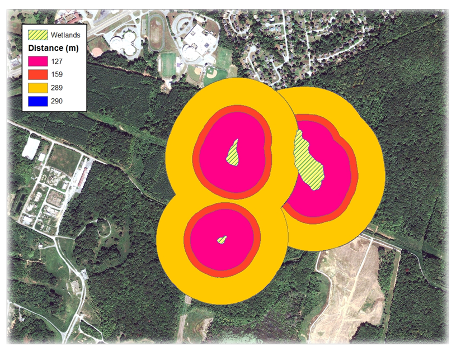|
Study Species / Study Area |
|
Objectives |
|
Preliminary Findings |
|
Conservation Implications |
|
Contact Us |
|
Acknowledgements |
|
Conservation Implications |

|
∑ To develop and implement adaptive conservation and management strategies. ∑ Hubs ∑ Corridors ∑ Buffers ∑ This is designed to be utilized in sustainable planning and development. |
|
DIRECTIONS FOR THE FUTURE
Reptiles and amphibians are the most under-represented in habitat fragmentation studies (McGarigal and Cushman 2002).†† Habitat fragmentation articles were surveyed by McGarigal and Cushman (2002) and they found only 4% out of 134 articles are of reptiles.† This study defines suitable habitat for amphibians and reptiles within the Highway 58 Corridor and suggests that the stability of current community may be imperiled and that the future communities will be at risk given the current state of habitat fragmentation and loss.† Empirical field studies are needed to map the distribution of occupied and empty habitat (Thomas and Hanski 1997) and to determine how sensitive communities/populations are to the rate of habitat loss and fragmentation.† Similar studies such as this can be used to communicate to Hamilton County elected officials, the Regional Planning Agency and the development community to incorporate rationale behind planning decisions that incorporate conservation ecology the life-history of the eastern box turtle and ambystomatid salamanders along with economic development.† More work needs to be done to quantify the historic variability of landscape pattern in the context of ecological processes (Gustafson 1998, Turner et al. 2001) and to create habitat maps from an organism-based rather than a strictly human perspective (Wiens 1976).
Authored By Marie Colson and Thomas P. Wilson October 31, 2010
Colson, Marie. 2009. Landscape patterns and patch dynamics in Hamilton County, TN over a forty-year period: Applicability to the conservation of the Eastern Box Turtle. Unpubl. Masterís Thesis.† University of Tennessee at Chattanooga. 120 pages with appendices. |